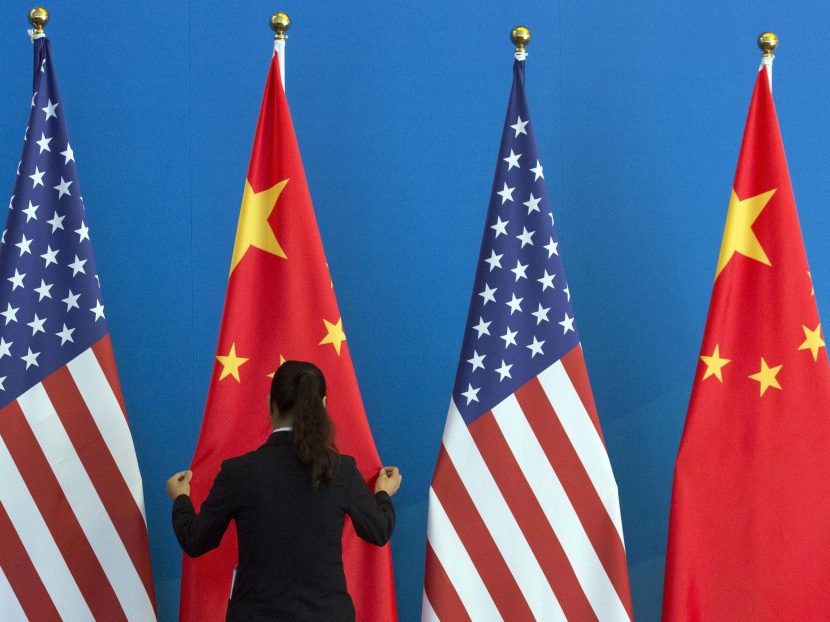Why an ageing China will never overtake the US as the world’s biggest economy
In 2010, China replaced Japan as the world's second-largest economy. Many economists believe it is just a matter of time before China dethrones the United States as the world’s biggest economy – some have argued that it could happen before 2030.

Forecasts that China will dethrone the United States as the world’s biggest economy neglect the country’s ageing population and its drag on growth, says the author.
In 2010, China replaced Japan as the world's second-largest economy. Many economists believe it is just a matter of time before China dethrones the United States as the world’s biggest economy – some have argued that it could happen before 2030.
They have cited the history of other Asian economies as evidence to back the claim. The nominal per capita gross domestic product of China was just a sixth of America’s in 2018 – a level similar to Japan in 1960, Taiwan in 1978 and South Korea in 1986.
In the following two decades, the three Asian economies achieved annual growth rates of between 7 per cent and 8 per cent.
As such, economists including Justin Lin Yifu, the former World Bank chief economist, have argued that China would go through a similar trajectory and the nation would be able to achieve a 6 per cent annual growth rate from now until the 2030s.
I beg to differ, however. These optimistic forecasts of China’s economic future neglect the country’s ageing population and its drag on growth.
The younger an economy’s population structure, the stronger its vitality for economic innovation. As the median age rises and the proportion of the population aged 65 and over increases, so the economic growth rate could plummet.
Read also
In 1950, the median age was 22 in Japan and 30 in the US.
Japan was younger than the US and had higher economic growth. However, the average total fertility rate from 1951-2017 was 1.77 births per woman in Japan and 2.33 births in the US, which led to a population ageing faster in Japan than in the US.
Japan’s median age and the proportion aged over 65 surpassed the US’ in 1967 and 1992 respectively. Japan’s GDP growth has been lower than America’s since 1992 (excepting 2010).
The size of Japan's nominal GDP rose from 8 per cent of the US’ GDP in 1960 to 71 per cent in 1995, and then fell to 24 per cent in 2018.
Taiwan and South Korea had similar experiences. In 1960, the median age was 20 in South Korea and 17 in Taiwan, versus 30 in the US.
However, in 2018, it was four and three years older than the US’ respectively. The nominal GDP of Taiwan and South Korea was only 0.3 per cent and 0.7 per cent of the US GDP in 1960.
It increased to 3.1 per cent for Taiwan and 7.8 per cent for South Korea in 2011, then faltered, and may gradually decrease in the future.
In 1980, China’s median age was 22, eight years younger than the US’.
From 1980 to 2011, China's annual GDP growth averaged 10 per cent, faster than the US’ 2.7 per cent. The size of China's nominal GDP rose from 7 per cent of US GDP in 1980 to 49 per cent in 2011.
However, China's GDP growth slowed from 9.5 per cent in 2011 to 6.6 per cent in 2018.
Read also
The slowdown can be blamed on a variety of factors. The first and probably the most important factor is that China is getting older, partly thanks to Beijing’s ruthless one-child policy.
In 2014, China’s median age had increased to 38, surpassing that of the US.
According to the United Nations World Population Prospects, the US population will increase from 328 million in 2018 to 370 million in 2050.
The cultural traditions of mainland China are similar to those of Taiwan and South Korea. Average fertility rates from 2001 to 2018 were 1.14 in Taiwan and 1.18 in South Korea.
If China is fortunate enough to stabilise its total fertility rate at 1.2, the total population will fall from 1.28 billion in 2018 to 1.08 billion in 2050.
This decline will be accompanied by an ageing population structure. The proportion aged over 65 will rise from 12 per cent in 2018 to 22 per cent in 2033, and 33 per cent by 2050.
In comparison, the proportion of those 65 and over in the US will rise from 16 per cent in 2018 to 21 per cent in 2033 and 23 per cent in 2050.
China’s median age is forecast to increase to 47 by 2033 and 56 in 2050. In the US, the median age will be 41 in 2033 and 44 in 2050.
China’s working-age population aged 20-64 began to shrink in 2017, while the US working-age population will not reach its peak until 2050.
From the above, we can conclude that China's GDP growth may start to fall below the US’ in around 2033, when the proportion aged over 65 begins to exceed that of the US.
Assuming that China and the US will have GDP growth rates of 6.3 per cent and 3 per cent in 2019, and then fall to 2.2 per cent in 2033, the size of China's GDP, which was 66 per cent of the US GDP in 2018, will peak at 84 per cent in 2033.
Thus, it’s clear China's economy cannot exceed that of the US. SOUTH CHINA MORNING POST
ABOUT THE AUTHOR:
Yi Fuxian is a senior scientist at the University of Wisconsin-Madison and author of Big Country with an Empty Nest.






